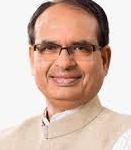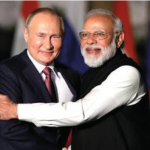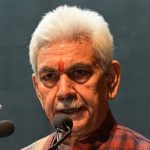India is facing its sharpest trade dispute with the United States in over a decade after Washington announced a steep 50% tariff hike on a broad range of Indian exports. The decision, authorised by U.S. President Donald Trump during his second term, has rattled markets, triggered emergency meetings in New Delhi, and accelerated the government’s Atmanirbhar Bharat (Self-Reliant India) agenda.
The White House justified the new actions by pointing to India’s ongoing imports of cheap Russian oil and the high tariffs on American agricultural products. Important export sectors including textiles, jewellery, electronics, processed foods, chemicals, and machinery—all of which are valued at tens of billions of dollars—are impacted by the tariff increases.
Adding to the diplomatic strain, President Trump described India as a “dead economy” while defending the tariff hike at a rally in Ohio. His comment has drawn sharp condemnation from Indian officials and industry leaders, who say it misrepresents the strength and dynamism of the Indian economy.
Strong Condemnation of Trump’s Remark
External Affairs Minister S. Jaishankar dismissed the “dead economy” label as “baseless and unbecoming of a strategic partner’s rhetoric.” Commerce Minister Piyush Goyal called it “a statement far removed from reality,” pointing out that India is among the fastest-growing major economies in the world, with growth forecast at over 6% for 2025–26.
Industry voices were equally firm. “The remark is not only inaccurate, it insults the hard work of 1.4 billion people,” said CII President Sanjiv Bajaj. “In every crisis—whether the 1991 reforms, the 2008 global financial meltdown, or the COVID-19 pandemic—India has emerged stronger, more competitive, and more confident.”
With record exports of $820 billion in 2024–2025, stable inflation, and a strong domestic demand base, analysts say India’s fundamentals are still strong. According to Dr. Meera Rao of the Indian Council for Research on International Economic Relations (ICRIER), “India does not weaken in difficult times—it reinvents itself.”
Following the announcement, the Sensex dropped by almost 500 points in early trading, with significant losses in the textile and pharmaceutical industries. As a result of investor concerns about export-driven earnings, shares of Sun Pharma, Lupin, and Arvind Ltd. fell.
According to government data, India exported goods worth $87 billion to the U.S. in 2024. Roughly $40 billions of those exports—about 4.8% of India’s total $820 billion exports in FY2024–25—will now be subject to the higher duties. Analysts warn U.S. demand for some Indian products could fall by 40–50%, particularly in labour-intensive sectors such as garments, jewellery, and footwear.
Government’s Diplomacy Response
Within hours of the U.S. decision, Commerce Minister Piyush Goyal convened consultations with exporters and industry bodies. “India remains committed to fair, rules-ased trade but will not compromise on national interest,” he told reporters.
Prime Minister Narendra Modi, in a televised address, rejected the “dead economy” claim outright and stressed India’s resilience. “Our economy is not only alive, it is thriving. We will turn this challenge into an opportunity, as we have always done in our history.”
Officials say New Delhi is following a twin-track approach—keeping trade channels with Washington open while intensifying engagement with other partners. A U.S. trade delegation is expected to visit India in the coming weeks, and officials have hinted at possible concessions on select American farm products as part of broader talks. Simultaneously, India is strengthening ties with BRICS+ members, ASEAN, and African nations, and exploring alternative export routes to the U.S. via hubs such as Dubai and Mexico.
Atmanirbhar Bharat Gains Urgency
The Atmanirbhar Bharat initiative, first launched in 2020, has become the centrepiece of India’s economic response. Its five pillars—rapid economic growth, world-class infrastructure, technology-driven governance, skilled human capital, and strong domestic demand—are being positioned as a shield against global market volatility.
Government data show progress in several areas. The Production Linked Incentive (PLI) schemes, with an outlay of nearly ₹2 lakh crore, have boosted domestic manufacturing in electronics, pharmaceuticals, and textiles. Mobile phone production rose from 5.8 crore units in 2015 to 33 crore in 2024, turning India into a net exporter. Pharmaceutical capacity expansions have reinforced India’s position as the world’s third-largest drug producer by volume.
“These issues are critical to the government and the Indian business hub,” said a senior Commerce Ministry official. “We must unite to address them as they are matters of national pride and self-respect.”
Vision of Viksit Bharat 2047
Officials have also tied the current challenge to the longer-term national vision—Viksit Bharat 2047—which aims to transform India into a fully developed economy by the 100th year of independence. The roadmap envisions:
A $30–35 trillion economy with per capita income on par with advanced nations.
- Globally competitive manufacturing and services sectors.
- Leadership in renewable energy, digital innovation, and high-tech manufacturing.
- Robust infrastructure linking every corner of the country with world-class logistics.
“This tariff episode is a reminder that our path to Viksit Bharat will not be without hurdles,” said NITI Aayog Vice-Chairperson Suman Bery. “But each external challenge strengthens our case for faster reforms and deeper self-reliance.”
Challenges to Self-Reliance
Despite recent gains, major hurdles remain. Small and medium-sized enterprises (SMEs) still face difficulties accessing affordable credit, with many citing stringent lending criteria. Logistics costs remain among the highest globally, eroding competitiveness. Key supply chains—especially in electronics, chemicals, and pharmaceuticals—continue to depend on imports from China and other countries.
Policy bottlenecks also persist. Delays in licensing, complex tax structures, and inconsistent enforcement slow down domestic production. A recent report by IIM Bangalore estimated that India will need $1.4 trillion in investment over the next five years to meet its self-reliance targets.
Industry Moves to Adapt
Exporters and corporate leaders are already adjusting strategies. The gems and jewellery industry is exploring overseas production bases to maintain U.S. market access. Garment manufacturers are negotiating tariff-sharing arrangements with American buyers or considering partial relocation of operations.
Large companies are also accelerating investments in domestic capacity. Automotive and electronics firms are expanding production for both domestic and global markets, banking on economies of scale to stay competitive. Technology and pharmaceutical companies are focusing on higher-margin products, while agricultural exporters are upgrading cold-chain infrastructure to target premium markets in Europe and the Middle East.
Now Is the Time to Show India’s Capacity
Observers say the moment demands not only policy agility but also national confidence. “Now it’s high time for India to show its capacity in front of the world,” said former Ambassador Rajiv Bhatia. “We have a great legacy of human power—brilliant minds, entrepreneurs, and innovators—whose ideas have shaped industries and economies globally. That same mindset can and will steer India through this storm.”
Four Policy Priorities
Economists and industry bodies are urging the government to act decisively on four fronts:
- Infrastructure – Accelerate projects under PM Gati Shakti and the National Infrastructure Pipeline to reduce export lead times and costs.
- Credit Access – Expand the digital MSME credit card scheme, offer sector-specific financing, and simplify loan procedures for exporters.
- Supply Chain Security – Promote domestic production of critical inputs and diversify sourcing to reduce vulnerability to global disruptions.
- Innovation and Skills – Increase R&D funding and expand workforce training for advanced manufacturing, robotics, and quality control.
Geopolitical Context
The tariff dispute is unfolding amid broader shifts in the global order. India has refused U.S. calls to halt Russian oil imports, emphasising energy security and market stability. At the same time, New Delhi is deepening its role in BRICS+, negotiating energy trade in non-dollar currencies, and exploring closer partnerships in Africa, ASEAN, and the Middle East.
“This is not isolationism—it’s strategic hedging,” said Prof. Arvind Taneja, a geopolitical analyst. “India is signalling it will engage with all, align with none, and place national interest above external pressure.”
Prime Minister’s Call to Industry
In his address, Prime Minister Modi described the tariff challenge as an opportunity:
“India has weathered many storms. This challenge is not a setback—it is a catalyst. Atmanirbhar Bharat is not just a slogan; it is our path forward. Let us reduce our dependency not just on imports, but on uncertain friendships.”
He urged industry leaders to see this moment in the context of Viksit Bharat 2047—a long-term commitment to economic sovereignty and global leadership.
Outlook: A Positive Future
India’s macroeconomic fundamentals remain strong. GDP growth for 2025–26 is forecast between 6.2% and 6.5%, inflation is under control, and foreign investors continue to show confidence. The nation’s deep talent pool, entrepreneurial energy, and reform momentum position it well to turn adversity into advantage.
If Atmanirbhar Bharat delivers on its promise and Viksit Bharat 2047 stays on course, this tariff dispute may be remembered not as a setback but as the spark that propelled India into its next phase of growth.
For a country with a legacy of overcoming challenges, this moment is another chapter in a long story of resilience. The message from policymakers, industry leaders, and citizens alike is clear: India will not be defined by external pressure, but by its capacity to rise above it—and lead.
(The Author is Faculty, Jawaharlal Nehru University, New Delhi. Email ID: [email protected])










